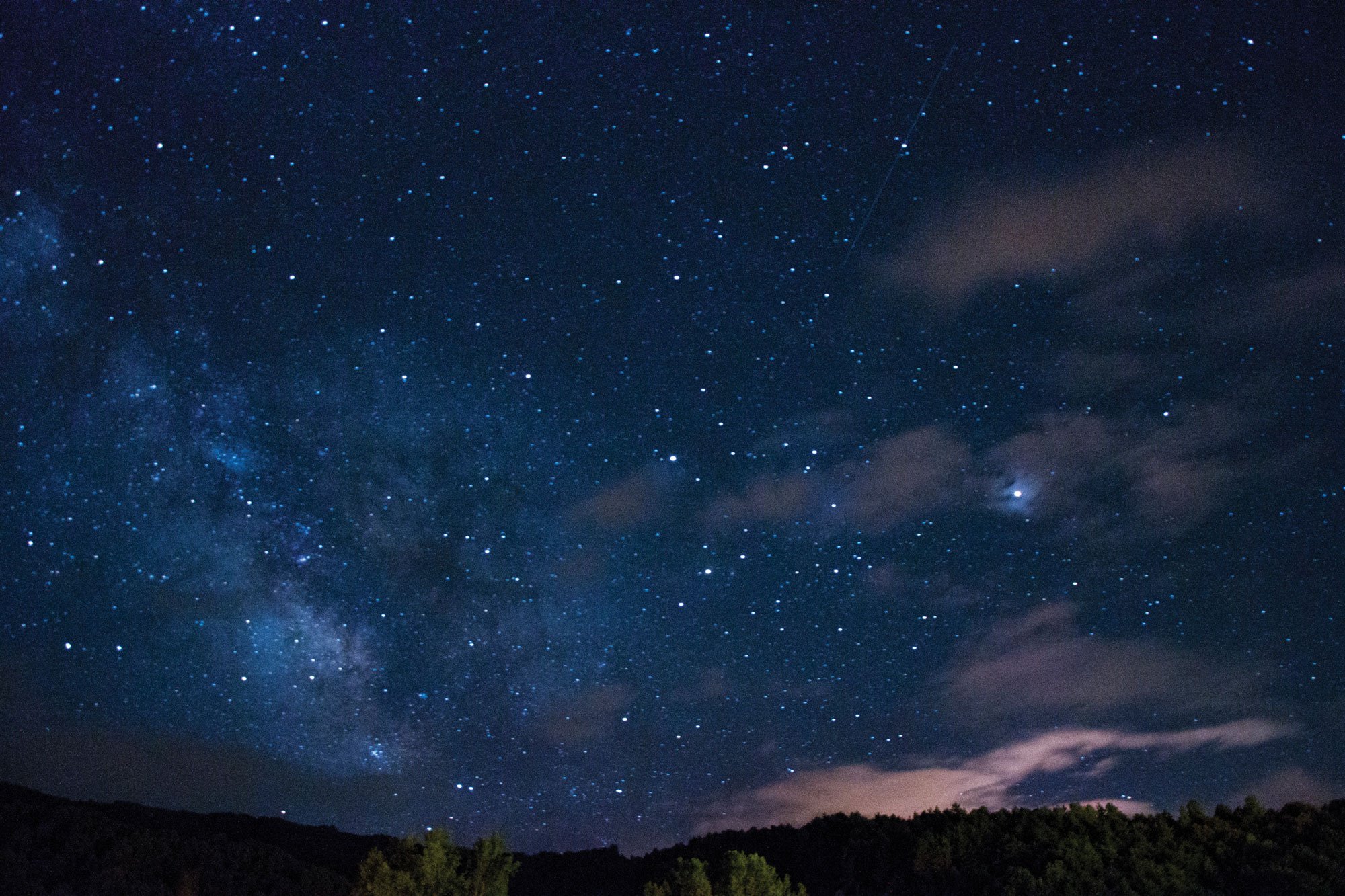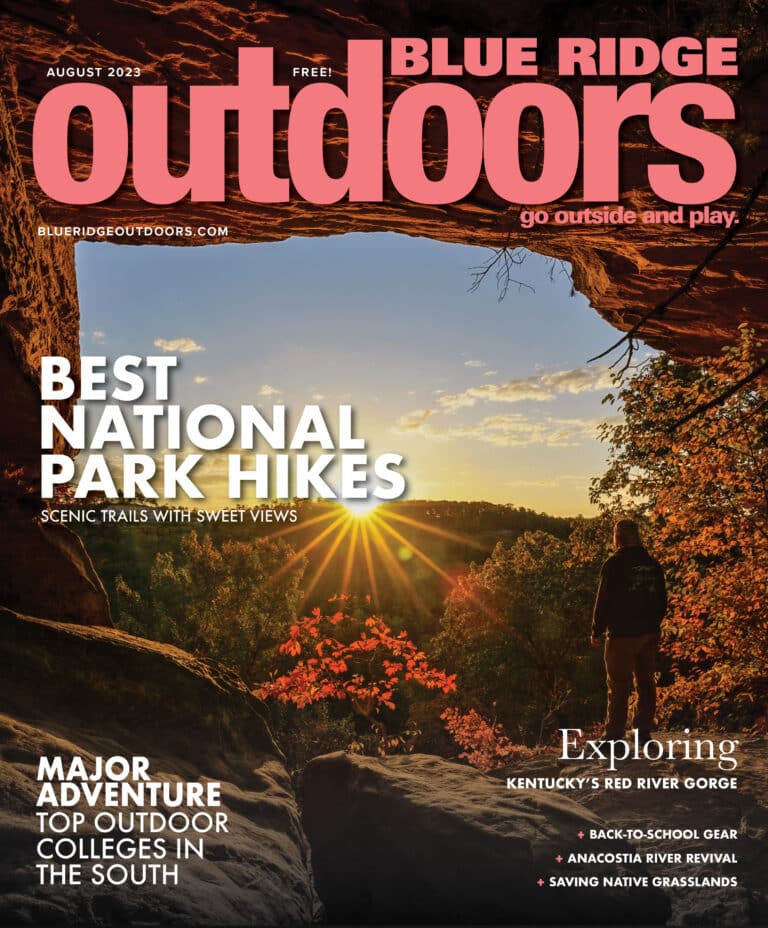The Transcendence of a Roadside Piss
My life changed forever at a rural exit along Interstate 44. I was seven years old, and I had to pee. We were on a long drive to visit my grandparents, and I had downed a Mello Yello just before we left. I couldn’t hold it any longer.
But it was late at night, and we were in the middle of nowhere. So my dad pulled off at the next exit ramp. The graveled shoulder crunched beneath the tires as he slowed to a stop. Hastily, just before my bladder exploded, I swung open the car door, pulled down my pants, and arced my stream into the tall grass.
And that’s when it happened: I looked up. For the first time in my life, I saw a night sky filled with starlight. The black canvas of night had been splatter-painted with stars. I was awestruck. There were uncountable suns spinning across the vast void. My knees buckled at the immensity of it.
Before that moment, I was a suburban kid who was afraid of the dark. Now I was a child of the universe. I craved the darkness and its constellations of light.
Since then, I have been chasing the darkest, deepest skies to stargaze. It is the perfect companion to any outdoor adventure. After exploring a wild, remote trail or mountain by day, I hunker down at night to soak in the stars.
Winter is the best time for stargazing, especially in the South, because the nights are long and the skies are more clear and crisp. Yes, it can get cold, but it’s a great excuse to snuggle up with someone beneath the stars.
The night sky in winter also offers some of the most jaw-dropping celestial wonders:
1. The next supernova? The star Betelgeuse in the constellation Orion could explode any day. It would be the first supernova to be observed in over 400 years. A supernova is the explosion of a massive star that can create black holes and create all of the elements in the universe—and in our bodies. We are made from the exploding guts of supernovae.
2. An ancient vision test: The Pleiades, or the Seven Sisters, is a cluster of young stars. Legend has it that if you can see five of them distinctly, your eyesight is normal; if you can distinguish all seven, you have eyesight fit for a warrior.
3. A stellar nursery: hundreds of baby stars are being born in the Orion Nebula, which appears as a fuzzy patch beneath Orion’s diagonal three-star belt.
4. The North Star – and the next North Star: Polaris, the bottom handle star of the Little Dipper, is currently the star closest to the Earth’s North Pole. But because the Earth wobbles on its axis, in 2,000 years the North Star will be Errai, a double star in the constellation of Cepheus and the only known binary star with an orbiting planet.
5. The brightest star in the sky: Sirius—the Dog Star—is part of the constellation Canis Major, one of Orion’s hunting dogs located just below and behind Orion in the night sky.
You’ll also see some non-stars. Five planets—Mercury, Venus, Mars, Jupiter, and Saturn—are visible with the naked eye. Meteors are constantly showering the earth: over 200 tons of cosmic rock and debris falls to earth each day, most of it the size of sand grains. You likely washed stardust out of your hair this morning.
The International Space Station orbits at 220 miles above the Earth and is visible with the naked eye. It reflects sunlight as it orbits the Earth at a speed of 17,000 miles per hour, and it appears as a faint start moving quickly and steadily across the sky. The International Space Station has been continuously occupied by astronauts from around the globe since 2000.
Private and commercial satellites are increasingly crowding the night sky. Most of the 6,000 satellites orbiting earth are not visible (and 60 percent are defunct), but SpaceX has already launched 300 satellites and plans to launch 12,000 more as part of its StarLink system to enhance broadband internet coverage. Amazon, UK-based OneWeb, and several Chinese companies have similar plans. That means the night sky could soon be cluttered with tens of thousands of satellites visible with the naked eye.
Go Stargaze
Where are the best places to stargaze? Any remote landscape far from city lights will work. The South is also home to several International Dark Sky Parks dedicated to protecting their night skies from light pollution.
Cherry Springs State Park, Pa.
Due to its exceptionally dark skies, Cherry Springs State Park is one of the best places in the eastern U.S. for stargazing. Located deep in Susquehannock State Forest, the Park’s Astronomy Field offers unobstructed 360-degree views of the night sky.
Mayland Earth to Sky Park & Bare Dark Sky Observatory, N.C.
Six miles west of Spruce Pine, N.C., and surrounded by Pisgah National Forest, this dark sky park is protected by Mayland Community College, which recently opened a new public observatory with a roll-off roof that features two telescopes for public viewing.
Pisgah Astronomical Research Institute (PARI), N.C.
Nestled in the Pisgah National Forest near Rosman at a former historic NASA facility, PARI is one of the darkest spots in the East. Its two radio telescopes also require a cell signal-free setting, so the remote mountain site is especially quiet and remote.
Staunton River State Park, Va.
Along the banks of the Dan and Staunton Rivers, this small state park features campgrounds, historic cabins, and abundant outdoor adventure.
Rappahannock County Park, Va.
This seven-acre park is just a few miles east of Shenandoah and the Appalachian Trail near Chester Gap. The Park serves as a mini gateway into the Virginia Blue Ridge and is one of the darkest remaining areas in the Eastern United States.
Okefenokee National Wildlife Refuge / Stephen C. Foster State Park, Ga.
The Okefenokee is the largest wilderness in the East and shelters the Okefenokee Swamp, the largest swamp in North America and one of Georgia’s Seven Natural Wonders. Due to this protected status, the Okefenokee remains one of the oldest and most well preserved freshwater areas in America. Soak in the dark skies while listening to the bellows of alligators sliding through the blackwater.
Must-See Meteor Showers
As Earth revolves around the Sun, it passes through streams of leftover debris from comets. Comets are dirty snowballs orbiting the sun that leave behind a dusty trail of rocks and ice. When Earth passes through these comet debris fields, showers of pebbles and small rocks glow with light as they streak through our atmosphere. The Earth regularly passes through the orbits of comets around the same time each year.
Lyrids: April 21-22
Eta Aquarids: May 4-5
Perseids: August 11-12
Orionids: October 19-20
Leonids: November 16-17
Geminids: December 13-14
Ursids: December 21-22
Plan your next outdoor adventure around these upcoming cosmic fireworks displays.
Cover photo courtesy of Getty Images








